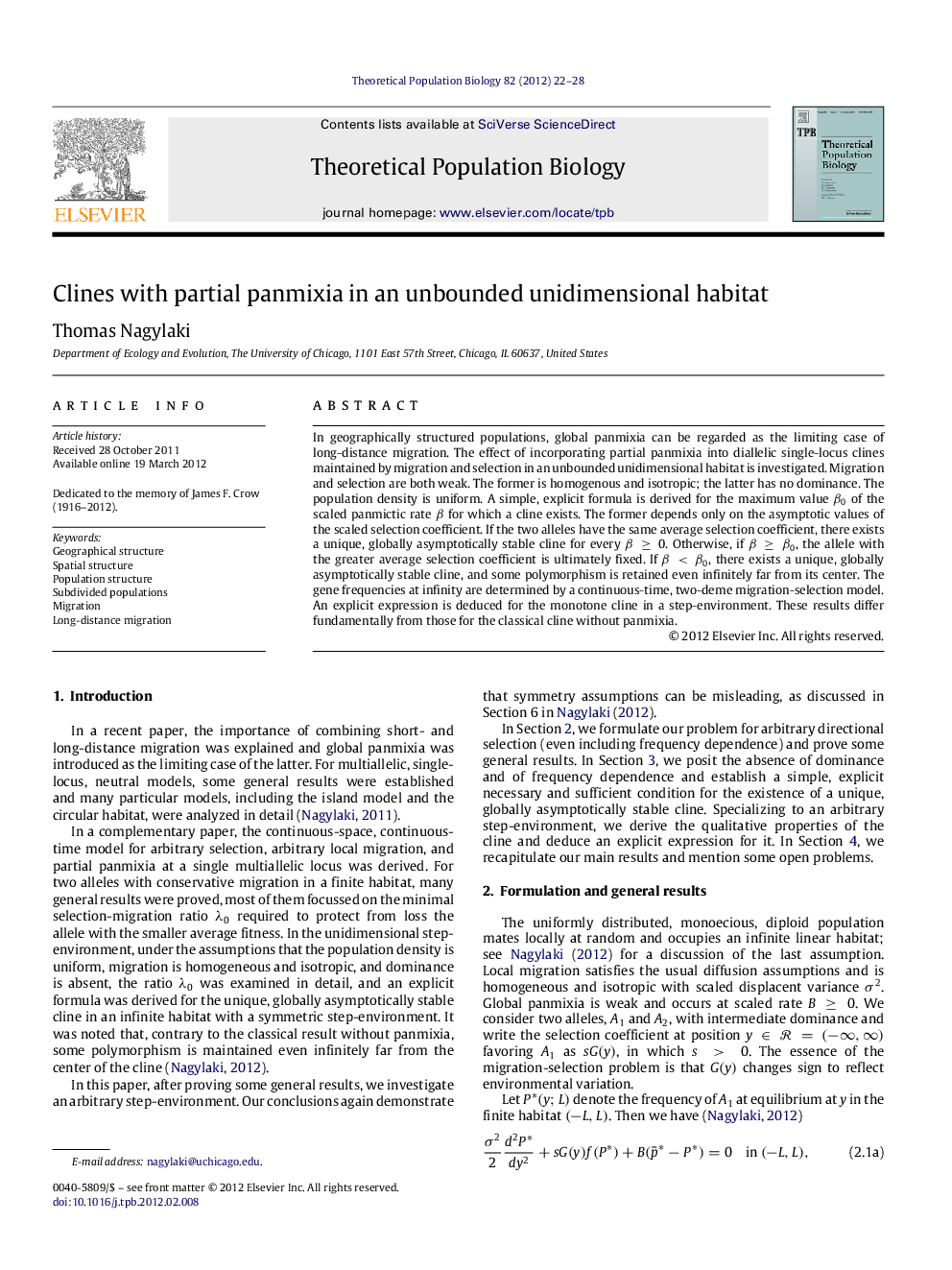| Article ID | Journal | Published Year | Pages | File Type |
|---|---|---|---|---|
| 4502464 | Theoretical Population Biology | 2012 | 7 Pages |
In geographically structured populations, global panmixia can be regarded as the limiting case of long-distance migration. The effect of incorporating partial panmixia into diallelic single-locus clines maintained by migration and selection in an unbounded unidimensional habitat is investigated. Migration and selection are both weak. The former is homogenous and isotropic; the latter has no dominance. The population density is uniform. A simple, explicit formula is derived for the maximum value β0β0 of the scaled panmictic rate ββ for which a cline exists. The former depends only on the asymptotic values of the scaled selection coefficient. If the two alleles have the same average selection coefficient, there exists a unique, globally asymptotically stable cline for every β≥0β≥0. Otherwise, if β≥β0β≥β0, the allele with the greater average selection coefficient is ultimately fixed. If β<β0β<β0, there exists a unique, globally asymptotically stable cline, and some polymorphism is retained even infinitely far from its center. The gene frequencies at infinity are determined by a continuous-time, two-deme migration-selection model. An explicit expression is deduced for the monotone cline in a step-environment. These results differ fundamentally from those for the classical cline without panmixia.
